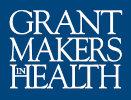Sarah Weinberg, Research Associate, AcademyHealth
Danielle DeCosta, Director, AcademyHealth
If research evidence falls in the vast forest of journals and grant reports, but no one outside hears it, can it inform policy? In today’s political climate, grantmakers must do more than generate knowledge. They must ensure that its real-world impact is visible, measurable, and defensible.
Given compounding, rapid changes in federal research support, it is crucial for researchers and funders committed to real-world impact and evidence-based decisionmaking to 1) develop an impact assessment method and framework to clearly capture research impact; and 2) broadly communicate such impact to policymakers and public audiences to inform social change.
Federal Research Funding Upheaval Underscores Urgency to Communicate Research Impact to the Public
Philanthropy plays a crucial role in shaping policy and enhancing government effectiveness through its support of research and analysis. However, foundations and other research funders frequently face challenges assessing the impact of research on policy and real-world outcomes due to time lags and difficulty attributing policy changes to specific studies. Further, large-scale portfolio evaluations are often time- and resource-intensive.
Communicating the benefit of research to the public also seems to be, for many funders and their research grantees, a missing and critical step. If we are to rebuild the health research funding ecosystem, the public must understand how they benefit from research and what is at stake if it disappears or ceases.
The field’s inconsistent ability to demonstrate impact to both decisionmakers and the public—both entities that ought to understand the value of (and champion) research evidence—poses significant risks in the current funding landscape. The federal administration has canceled or frozen thousands of grants in 2025, slashed funding to agencies like the National Institutes of Health and the Agency for Healthcare Research and Quality, and eliminated key public health datasets and guidance. One reason these attacks have succeeded may be the limited visibility of research impact for patients, communities, and health systems, hindering public and political motivation to defend it.
Creating Frameworks, Tools, and Processes to Measure Research Impact
Philanthropic organizations have the necessary building blocks to demonstrate that the research they fund matters, and now more than ever should invest in measuring and communicating this impact to public audiences, in partnership with grantees. As the national home of health services and policy research, AcademyHealth has a vested interest in ensuring that research informs health policy and practice but documenting and communicating about impact are essential competencies for all research funders, and no standard templates exist. Below, we share lessons from AcademyHealth’s collaboration over the last 10 years with two health research funders and approximately 80 research grantee teams to create practical impact assessment tools and approaches and communicate the value of research.
To help sustain the crucial role of evidence in policy and decisionmaking, research funders can utilize practical impact assessment approaches, such as developing a framework to measure real-time signals of impact and leveraging existing skills and processes, such as grantee reporting, to implement them. For example, AcademyHealth’s research impact assessment journey began with a pilot project during which we designed a spreadsheet template for researchers to indicate levels of awareness, influence, or impact their research generated for key audiences. This tracking centered on the reach of traditional research outputs (e.g., peer-reviewed publications) and discrete dissemination activities (e.g., policymaker briefings). The spreadsheet was simple but served an important purpose in gathering data from research grantee teams in a familiar manner and transmitting data to our foundation partner.
We have since expanded the metrics set and developed a streamlined, cloud-based mechanism for impact monitoring and aggregation, increasing accessibility and understanding of the data for both researchers and their funders. Grantees participating in this initiative provided valuable feedback, which enabled us to iteratively refine the impact framework to best align with their work and yield more comprehensive narratives of their impact. To better reflect the value of communication and relationship-building, for example, our impact framework has evolved to include tracking collaborations, community engagement in research, and other types of relationship-building that can facilitate impact in policy and practice. The current framework therefore goes beyond traditional grant outputs, while still aligning with the foundation’s priorities and minimizing grantee burden to report the information.
Communicating the Real Impact of Evidence: Examples from the Field
Funders who want their investments to shape policy and lead to real-world impact must actively communicate findings to policymakers and other decisionmakers, such as health system or community leaders. One effective way to communicate has been gathering brief “impact stories” in our current grantee impact reporting, as grantee narratives are a valuable way to capture meaningful and compelling examples of research impact that can be easily shared with advocates and research champions.
Funders and their partners have also employed various strategies to enhance the visibility of real-world research impact for public and peer audiences. For example, the Interdisciplinary Research Leaders program is a fellowship for community-engaged, health equity research teams whom the Robert Wood Johnson Foundation (RWJF) funds to participate in advocacy and communications training, including strategies to track the impact of research dissemination. This initiative exemplifies the role a funder can play in building the capacity of leaders in the field to document and communicate the real-world impacts of evidence. Another example of uplifting impactful evidence and those who fund it is a September 2025 opinion piece in The New York Times written by AcademyHealth CEO, Dr. Aaron Carroll. The essay describes the vital role of institutions comprising our science and research infrastructure in improving our health care system. The comments section illustrates how the piece resonated with readers, with some commenters sharing personal stories of their health care experiences.
A final example comes from the Health Data for Action (HD4A) grant program, funded by RWJF and managed by AcademyHealth, which reduces barriers to high-value health datasets and helps researchers build the skills to communicate policy-relevant findings beyond academic settings. One grantee examined how insulin out-of-pocket costs affected patient adherence just as federal lawmakers were considering insulin cost caps. With HD4A program support, the researcher received communications coaching and participated in briefings with congressional staff, bringing timely, independent evidence into a live policy debate and ultimately contributing to a $35 cap on insulin for Medicare Part D. As the grant program office, AcademyHealth shared this story widely, illustrating the value of strategic support for research translation. This approach of integrating communication planning and implementation into grant programs and then telling the story of the results is one that other funders can replicate. It ensures that when the evidence is ready, so are the people and systems needed to deliver it to those in power.
Recommendations for Funders
Together, it is possible for researchers and funders to efficiently and meaningfully document and communicate the impact of research, to ultimately foster more significant and lasting change. Funders can enhance the way they partner with grantees to measure and communicate the real-world impact of their research investments by:
- Committing to creating and refining their impact framework in deep collaboration with grantee partners, who are the best sources of information. The impact assessment strategy should prioritize collecting impact information in the least burdensome way (i.e., integrated into regular grant reporting), and ideally provide value to grantees as well.
- Identifying the intended audience(s) for impact information, whether those with a direct interest in the work (e.g., Board members, donors) or others whose decisionmaking affects the broader research ecosystem (i.e., government officials with power over research funding and data).
- Determining a measurement approach and specifying metrics that reflect what information will resonate most with key audience(s). A combination of quantitative (numbers) and qualitative (stories) is invaluable for understanding impact, particularly given the diversity of grant awards across budget, duration, aim, and audience. For those with many grantees, a cloud-based platform for collecting impact information that supports scalable data aggregation, visualization, and dashboards can be particularly helpful.
- Designing a system that provides value for both funders and grantee partners, considering the reporting burden and tradeoffs of real-time vs. periodic retrospective reporting. To meaningfully acknowledge the time and effort required for impact monitoring and reporting, such activities should be adequately compensated via grant budgets.
- Refining the impact framework and tracking approach periodically to align with funder strategy, accounting for what data are available, what data are needed, and how to obtain or generate those data. Impact frameworks should be customized to reflect the funder’s mission, strategic plan, and portfolio objectives. A balance of breadth and specificity in the framework and corresponding metrics can facilitate scalability (i.e., the more specific the metrics, the less scalable).
- Communicating (and supporting grantees to communicate) the impact of the evidence.
In collaboration with grantee partners, health research funders committed to evidence-based decision-making need to use clear and systematic strategies to capture research findings and their real-world impact—and then, they need to tell the world about it.

